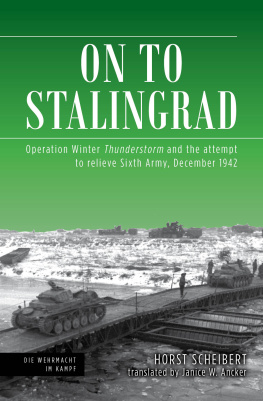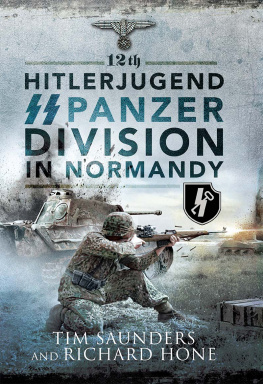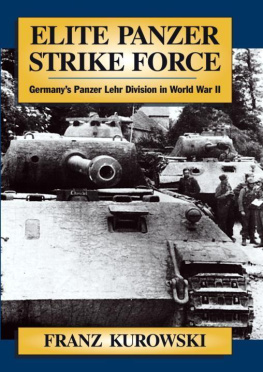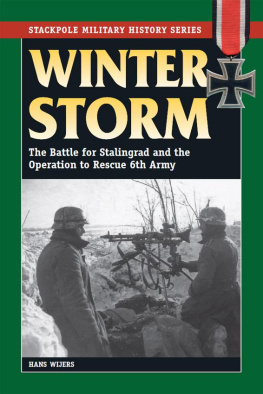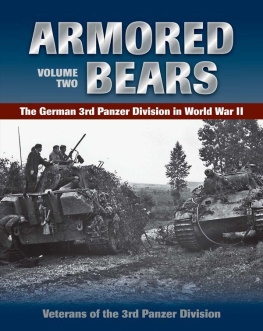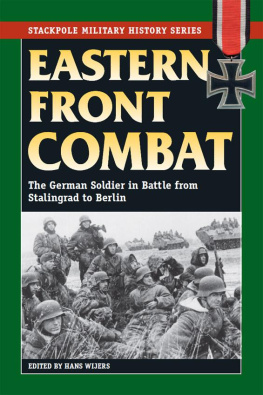ACKNOWLEDGMENTS | 
|
This book is far more than my sole contribution. Many people have given unstinting support and valuable assistance, even in the early days when it seemed as if this book would never be completed. I will try to list them all but if I have forgotten to name you, please accept my gratitude. First of all, I would like to thank Thomas Heitzer from Switzerland for his generous contributions and his trust in me by sending copious amounts of research material half way around the world. I was introduced to Thomas by Heinz Schlaefereit and after my initial letter, a stack of excellent unpublished photographs arrived at my home. Rare regimental histories, divisional newsletters, diaries and more photos continued to arrive over the next few months. Without his assistance, this book would be much the poorer. Thanks again Thomas.
My heartfelt thanks go to all the veterans who responded to my letters, queries and questions. Their effort in replying to a young Australian author is particularly admirable, especially when one considers that some of these octogenarians wrote page after page of anecdotes and recollections, and also sent their own private photographs. Special thanks go to Heinz Kolczyk, Dr. Horst Rocholl, Hans-Ludwig v. Stockhausen, Hasse v. Langenn-Steinkeller, Kuno von Meyer, Georg von Raison, Heinz Schlaefereit, Dr. Hans-Georg von Tiedemann, Hans Henning v. Christen, Dr. Hubertus Schulz, Richard Wildeus, Gnter Koschorrek, Ernst Panse and Ferdinand Kusterer. Thanks also to Christian Keiler, Egbert v. Schmidt-Pauli, Konrad Freiherr von Woellwarth, Gerhard Uebach, Heinz Wippermann, Peter Leidner, Friedhelm Heuelmann, Dr. Thedel Freiherr von Cramm, Dr. Wolfgang Kuls, Horst Haubold, Egon Rudi Schwenger, Andreas Igor-Meyhoeffer, Horst von Bassewitz, Ina v. Knebel-Doeberitz, Annemarie v.d. Decken-Offen, the family of Friedrich Raaf, Isa-Karin Freifrau v. Eickstedt, Gabriele v. Sivers, and Anneli Rogge. My sympathy goes to Andr von Raison who had the sad duty of informing me of his fathers death.
I cannot neglect to mention the assistance given to me by veterans of other units, particularly Ansgar Pawelke of Panzer-Regiment 15, Karl Heinz Loschke of 11. Panzer-Division and Walter Rahn for excellent information about Karl v. Sivers. Walter Rahn was Ordonanzoffizier to Karl v. Sivers and was able to provide personal insights into his character. Thanks too to Albert Schick of 10. Panzer-Division for great information and fantastic photographs of Oberst von Broich.
I am grateful for the help and advice given to me by two fellow Stalingrad researchers, Geert Rottiers from Belgium and Hans Wijers from The Netherlands. Both men are conducting first-rate research and by their efforts, are casting a bright light into the dark corners of history.
Geert maintains an excellent Stalingrad website and Hans is in contact with hundreds of veterans, organises reunions and writes and edits many books. I would especially like to thank Hans for introducing me to the microfilms of the National Archives in Washington because it is the 24. Panzer-Division war diaries contained on one of them that provided the solid framework for this book. Thanks!
I would like to recognise the professionalism of the Bundesarchiv staff, in particular Frau Martina Caspars, for their prompt response to all my requests. Thanks to the ECPA in Paris and the National Archives in Washington for supplying me with great photographs.
Thanks to Paul Macarthur and Michael J. Pruett for the use of photos from their private collections, and Peter Fogg for helping me with other photographic needs.
My greatest respect goes to the patrons of Jason Pipes Heer forum on the Web (www.feldgrau.net). No matter how difficult or obscure my question, there was always somebody there who could give me a lengthy but clear explanation. Many tricky and colloquial translations were also solved by the guys on this forum.
My gratitude goes to the staff of University of Sydney Library for helping me in the early stages of my research. I remember the looks on their faces when they saw me sitting in front of a microfilm printer churning out hundreds perhaps thousands of pages of war diaries. And their patience in repeatedly fulfiling my requests for more paper and more toner. I fondly remember the many eight hour days I spent there but I hope I never have to do it again!
Although all of these people have contributed greatly to my book, all judgements and interpretations are my own and they bear no responsibility for any errors.
In a few instances, I have been unable to trace the copyright holder of works where the publisher has ceased trading. In these cases I apologise for any unintentional breach of copyright.
Any comments, criticism, corrections or additions will be greatly appreciated. Write to me at leapinghorseman@hotmail.com
Jason D. Mark
Sydney, Australia
July 2002
OFFICER BIOGRAPHIES APPENDIX ONE | 
|
Achmann, Stabszahlmeister Gerhard; born 18 December 1904 Dettelbach/Main. Abteilung Zahlmeister I./Panzergrenadier-Regiment 26. Wounded on 16 September 1942. Died from these wounds on 17 September 1942 in Novi Rogachik. Posthumous promotion to Oberstabszahlmeister. Now buried in Rossoshka Sammelfriedhof (collective cemetery) in Block 26, Row 13, Grave 485.
Adamheit, Sonderfhrer (Z) Alfred; born 18 February 1901 Moscow. Dolmetscher (translator) on Stab 24. Panzer-Division. Transferred on 15 September 1942 from 24. Pz. Div. to Stab/4 Pz. AOK. Later became Dolmetscher in 297. Inf. Div. Listed as MIA 22 January 1943 in Stalingrad. Still listed as MIA. His name is on Cube 1, Panel 5 at Rossoshka Sammelfriedhof.
Ahollinger, Hauptmann Siegfried; born 10 February 1915 Dresden. Assigned as General Staff trainee to 24. Panzer-Division Stab. Transferred on 3 October 1942 from Artillerie-Regiment 377 to 24. Pz. Div. In hospital outside the Kessel but flown in early January 1943. Commander of Abteilung Kannegiesser from 820 January 1943, then Ib of the Division. Flown out of the Stalingrad pocket on 23 January 1943. Attended General Staff course in Berlin from 15 March28 May 1943. Attached to General Staff on 1 June 1943. Became Ib of 83. Inf. Div. on 20 June 1943. Major i. G. RDA 01.12.43 (40). Also assigned to General Staff on 1 December 1943. Then Ia XXXVIII. Armeekorps on 20 March 1944. Appointed Ia 218. Inf. Div. on 25 August 1944. Survived the war. Died 4 March 2003 Kln-Wei.
von Amsberg, Oberleutnant Helmut; Regiment Adjutant Panzerartillerie-Regiment 89. Wounded on 2 September 1942 but stayed with the troops. Again wounded on 3 September 1942 while in Oberst von Nostitz-Wallwitzs command vehicle. Survived Stalingrad. Promoted to Hauptmann RDA 01.01.44. In Division at the end of the war. Still alive in 2001.
Andreesen, Leutnant Hans-Helmut; born 15 March 1923, Mannheim. In IV./Panzerartillerie-Regiment 89. Peacetime unit was I./Artillerie-Regiment 20. Leutnant RDA 01.2.42 (1043a). Transferred on 20 October 1942 from Artillerie-Ausbilding-Abteilung 280 to IV./Pz. Art. Rgt.89. When Leutnant Geissler did not end up being transferred, his place was taken by Andreesen. Listed as MIA 23 January 1943 in Stalingrad. Still listed as MIA. His name is on Cube 2, Panel 5 at Rossoshka Sammelfriedhof.
Anstett, Oberarzt d. R. Dr. Claus; born 3 August 1914 Pirmasens. Abteilung Hilfsarzt I./Panzergrenadier-Regiment 21. Became I. Abteilung Arzt on 27 September 1942. Iron Cross First Class on 2 October 1942. Killed 13 December 1942 near Rychov.
Next page


